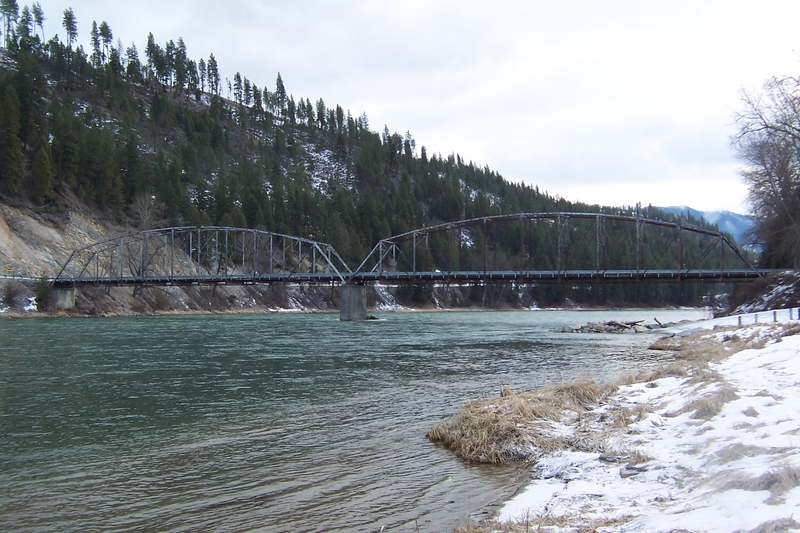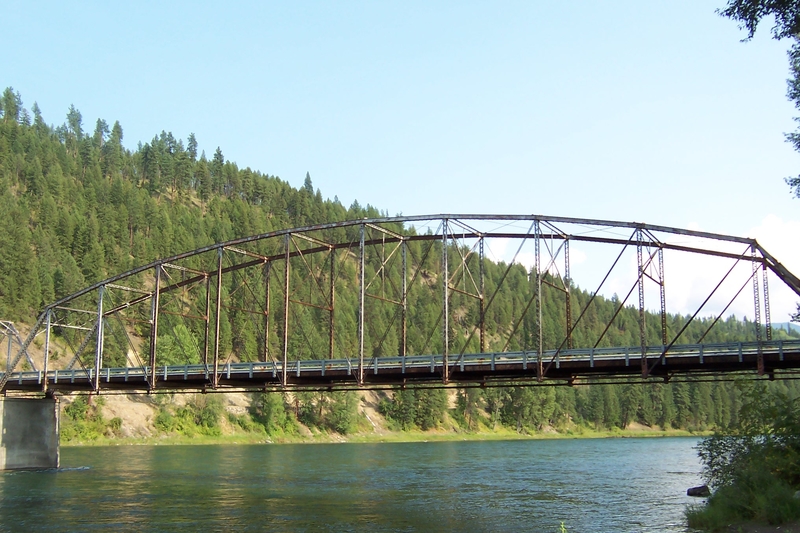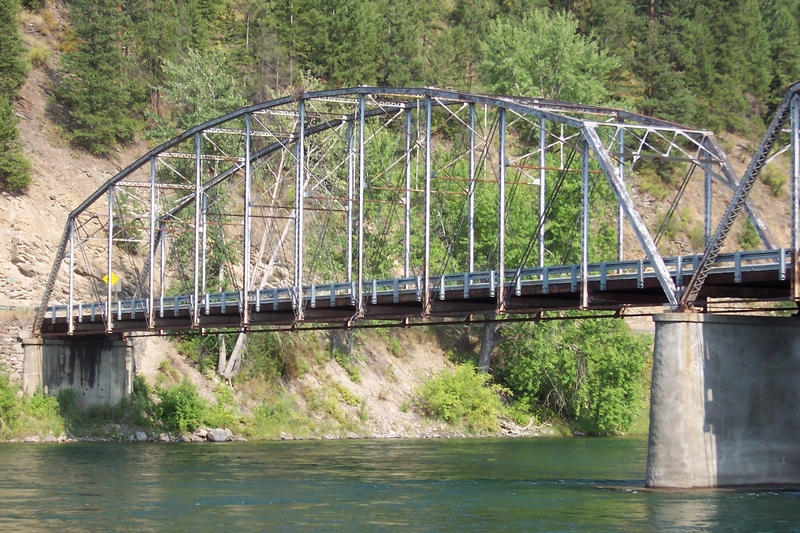Theodore Roosevelt Memorial Bridge

Before Libby Dam tamed the river, the Kootenai became "a death dealing torrent in high water time." Raging currents regularly shut down ferries, stranding supplies intended for logging and mining camps and keeping north side children from their school across the river. The lack of roads and bridges also stymied economic development. Proper infrastructure, area boosters claimed, would bring both more settlers and automobile tourists en route to Glacier National Park. Voters concurred, passing a $125,000 bond measure in 1911 to improve roads and construct bridges at Libby, Troy, and Rexford. The Coast Bridge Company of Portland, Oregon, won the contract for all three bridges and within weeks a crew of engineers arrived in Libby. Work stopped, however, when Eureka residents, possibly angry over not getting their own bridge, filed an injunction to halt construction. Bridge and road contracts provided notorious opportunities for graft, but in this case the court found no wrongdoing. Construction resumed in June, and on December 17, 1912, the Troy Bridge (later renamed after President Theodore Roosevelt) opened to traffic. "The bridge is the best of its kind," crowed a local newspaper. "Two spans, with a middle pier, and is perfect in every respect." In fact, the bridge's Parker through-truss design was well-suited for the location. The rigid triangle trusses provided the structural stability needed to span the wide river, and the pre-manufactured rolled steel beams made on-site assembly relatively simple. Of the three Kootenai valley bridges to share the standardized design, this is the only one still standing.
Images


